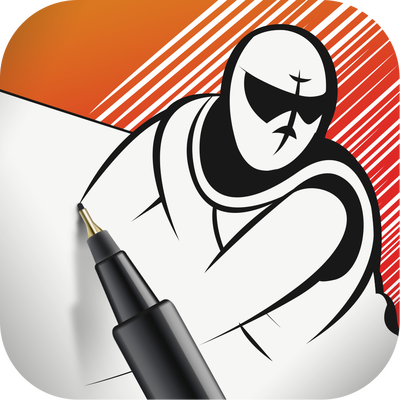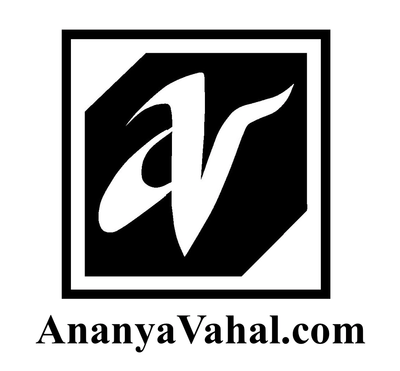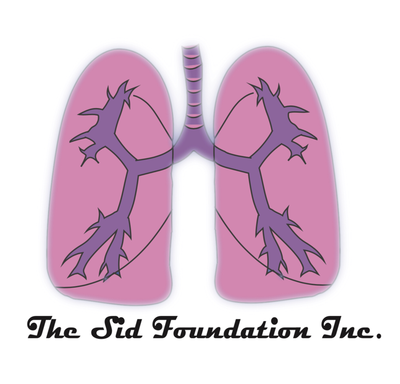Where are your from? ATL born and raised. Where did you grow up? Born in East Point and later grew up in Union City, Ga How did your experiences affect your art? I grew up tagging along, or being dragged along with my pops, also an artist, to work sites to paint murals, create logo designs, T-shirts, you name it. All of that helped me understand the business side of art and my father helped push me to study anatomy and design. His love for comics and sci-fi also influenced me greatly. What type of stories do you like to make comics about? Generally, sci-fi, fantasy. I need both or one of those elements to keep my interest. Whats your process? Elaborate on how you work through your projects. How do you break up your time for your projects at different stages? With my current story, COUNTER AGENTS, it’s a bit weird. It started as just a sandbox type of project. I planned to do it just to get back into drawing and to figure out the whole system of producing a comic. So, it is in a strange order I guess. First of all, I have the general direction of the story in mind. Then, I visualize it and sketch it out. Once I get the details down, I drop lines and then I render the backgrounds. After that, I color the characters and add shadows and effects. Finally, I work out the script. Lol which is usually first. What do you recommend to aspiring artists that you wish you had known much earlier? What would you tell yourself 20 years ago? Don’t be ashamed or afraid of cheating. Especially, if you’re a one person studio. Design your backgrounds for multipurpose use. Every major studio cheats lol. Don’t kill yourselves with perfectionism. What do you love best about making comics? Creating new worlds What do you wish was different about the comics industry? I wish the US industry would let the characters grow old and die. I wish the characters didn’t have so much plot armor and were more mortal. Pass the torch. Which books do you recommend artists should have in their reference library? Favorite instructional material? Any anatomy book with people with imperfect bodies. Perspective books also. I don’t have any specific books myself as I feel u can learn from just observation. Life drawing is the best. I mean Picasso paid prostitutes. No books lol. And nothing beats learning from your peers. Top 5 favorite artists. My pops is always at the top - Alvin Stewart Yusuke Murata - illustrator of One Punch Man Taguchi Masayuki - illustrator of Black Joke I’m really digging Sanford Greene right now Also Shawna Mills But the list may change by the end of the week lol Favorite comic characters. By far, Thanos of Marvel lore. After that Majeh from the King of Hell manga series. Top 5 favorite comics & graphic novels. Right now - One Piece My Hero Academia The World War Hulk and Planet Hulk series And Fable What type of work are you interested in doing? Now? In the future? Primarily, comics. Maybe some motion comics in the future and of course a bit of animation. But really more of a director/producer role for animation lol. How can others find or purchase your work? Website, social media link, etc. My website is ndgoink.com where u will also find my webcomic COUNTER AGENTS.. @Ndgo on Instagram You can find me on FB, Twitter, Instagram, and at NDGOink if not just by my name.  a snippet from my next project: ISSHO NI
0 Comments
The Creators on the Come Up interview series highlights noteworthy emerging artists in the comics field.
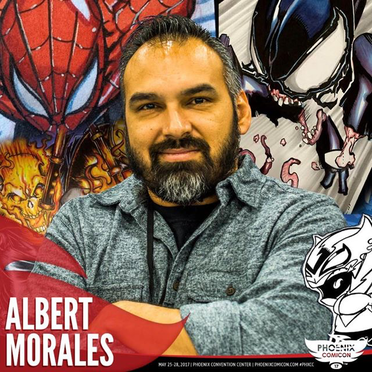
Albert Morales
"one instance where I was not really true to myself, and when it was all over I opted to never "kiss butt" and sell myself short again, and I haven’t." @angryroosterstudios https://angryroosterstudios.weebly.com
Bio:
Albert Morales is the lead dropping cartoonist/comic book artist behind ANGRY ROOSTER STUDIOS. He is currently working on the completion of his script for prominent publisher HUMANOIDS. His notable work to date includes art for and working with FLEER ULTRA X-MEN, FLEER ULTRA SPIDER-MAN, MARVEL PREMIER 2017, SPIDER-MAN: HOMECOMING, U-HAUL INTERNATIONAL, GAME ON EXPO. His cartoon strip SUPER IMPACTO VS. THE WORLD has been acquired by the BILLY IRELAND CARTOON ART MUSEUM at OHIO STATE UNIVERSITY. Albert is also a proud contributor to the LATINX project: TALES from LA VIDA, which features multiple prominent and up and coming cartoonists. Questions: Where are your from? Where did you grow up? I am was born and raised in Corpus Christi, Texas but now live in Scottsdale, AZ. How did your experiences affect your art? I don't know that some of the experiences I've had in life have affected my art often. My mind tends to get distracted in regards to directions. So I tend to go with that flow more than anything. There was one experience in particular that affected me greatly. It was one instance where I was not really true to myself, and when it was all over I opted to never "kiss butt" and sell myself short again, and I haven't. i'm more direct now, possibly a bit gruff, but it tends to get the job done more often than not. You received a publishing opportunity. How has been that experience? I’ve recently had a publishing opportunity with my fellow Latin X’ers (Tales From La Vida). That was AMAZING! I think a book like that really shows the world what has driven us to become who we are or what lead us there. What type of stories do you like to make comics about? That's a hard one. Again I tend to jump around from fine art to comics to comic strips. Story wise...I have Super Impacto who I've never been able to tackle just the right story for him...possibly cause I'm so attached to him (in more ways than one). Comic strip wise, he does tend to have my attitude of having to conquer everything in front of him. He almost takes any minute threat to a whole new level, hahahaha. In comic book form..... I like action/ mystery. My Annihilation Jones project has something I'm after- that 90's excitement of MTV (when they still played music), when X-Force and Image Comics were coming out. Whats your process? How do you break up your time for your projects at different stages? I wish I could stay more focused that's the truth. Again, I tend to jump around, but life also has a huge impact on what it is I do at the time. I have to treat art like a business. I think that's just the way I am. So freelancing leaves little to no time to work on creative projects of my own. It's a bit of struggle a lot of times. Yes you are getting paid, and people are requesting your work, However you are missing out on bringing a new creation into the world that is yours. I will say though when I am working on creator owned or any projects I tend to look to see how many mediums the assignment/ book can fit into. That's generally the key to how I work or how I choose projects. What do you recommend to aspiring artists that you wish you had known much earlier? To a very younger me I would have told to practice panel layouts and tell a story- don't focus on pin-ups. Don't cut yourself short. If you know the angles or see them, take the opportunity and run with it as much as possible. What do you love best about making comics? The fans reaction to your work, especially in person. If you another creator to really digs your work then that's something special too. It opens up new doors and conversations that create new friendships. I think Ohio State University and SOL-CON did that for me last year (2017) which was great. What do you wish was different about the comics industry? I wish there was more room for independent books. I wish cons and the shelves had more creator owned books. I think that fresh blood is needed. I'd like to join in and help kick down the door or at least open it up just a little more. I like making an IMPACT, it's what I do. Which books do you recommend artists should have in their reference library? Favorite instructional material? That's a tough one because everyone has different choices or materials they like. Movies let me do that.
Top 5 Favorite Artists?
Top Favorite Comic characters?
Top 5 Favorite comics, graphic novels?
1. Thor by J. Michael Straczynski 2. Ghost Rider 3. Super Sons - Jorge Jimenez stuff 4. Sam and Twitch 5. Batman- the WHITE KNIGHT What type of work are you interested in doing? Now? In the future? I'd like to work more on my creator owned books. I have Super Impacto & Annihilation Jones underway for 2018. Currently I am cleaning up a script for Humanoids, a graphic novel of my own device. I'd also like to do a run on a series- Ghost Rider specifically. A short miniseries would be awesome. How can others find/ purchase your work? They can reach out to me on facebook or Instagram. https://www.facebook.com/albert.morales.5477 https://www.instagram.com/angryroosterstudios/
The Creators on the Come Up interview series highlights noteworthy emerging artists in the comics field.
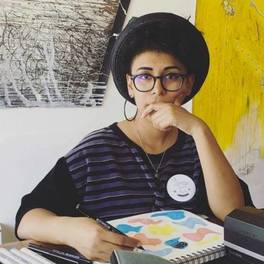
Breena Nuñez "Know that your time and imagination are in charge of reshaping culture and the way we see the world. " @Breenache https://www.etsy.com/shop/breenache Bio: Breena Nuñez is an Afrochapinaca weirdo from the Bay Area who likes to make comics, teach comics, and read comics. Questions: Where are your from? I usually say I'm from the Bay Area since my family and I moved around a lot during the 90's. My family first rooted themselves in San Francisco's Mission District after migrating from Guatemala and El Salvador. But now Oakland has been my new home for a little while now. Where did you grow up? Mostly South San Francisco and San Bruno, which is all South from San Francisco. How did your experiences affect your art? My personal experiences with being a nerdy Central American kid influences my drive to tell stories through comics, because I feel like there was still an unspoken wish I had to read more stories about what it meant to be Central American. I was also a very quiet and self-conscious child when it came to speaking up for myself because I was misdiagnosed with autism and was a part of the Special Education program for so many years. It really made me feel like I wasn't intelligent enough communicate with others, and I never questioned this system or my diagnosis because these "grown-ups" knew better, right? Well, the only two things that validated myself were comics and music. Those two forms of art made me feel like there was a life I could build for myself and to fully express my feelings because I'm not a very outspoken person, but I internalize so much that I need time to find a way to put it all in a comic or in a little song. You are also a musician. How does being multitalented & skilled affect your creativity and process? It feels like you are engaging with different parts of your brain and your body when you switch from playing music to making comics. It's actually pretty exciting that I don't have to just express myself in one medium because I crave excitement and joy in different forms of art. I feel like music at one point heavily influenced the way I experimented with my artwork whenever I studied Sun-Ra and Pharaoh Sanders, it really brought me to realize that they were really ahead of their time in Afrofuturism. Nowadays Afrofuturism is so present in comics and I feel like we owe it to black musicians for influencing the way we write and illustrate sci-fi comics. As far as carrying these two talents I still keep them separate since they both require different types of energy, and right now comics is getting a lot more attention while I sadly put music in a corner. Haha! But I think after graduate school I hope to make more time to play and experiment with these two mediums. Is your music also a component/ dimension of your comics? Hhmm, I don't think it really does at this moment. But there was a bigger relationship between music and comics when I made a short series of illustrations combining my love for music and comics titled Somos El Futuro. I honestly hope to get back into something like that because it drives me to study music more and to see how I can fuse these two pieces of myself together. You are currently a graduate student. What drove you to pursue a Masters degree? It's definitely because I craved to be in a place of learning where the focus is comics. At one point that felt silly of me to dream of a graduate program like that because we're so close to Silicon Valley and there's this pressure to work in big tech as some kind of graphic designer. But I knew deep down that I was not going to be happy in a tech company, I also just don't have the brain capacity to invest in new trends and new ways of designing stuff because I'd rather researching cartooning styles by watching Cartoon Network and reading zines made by my friends! At one point I thought about getting a Masters in Teaching Art since I want to be accessible to young black and brown kids who love comics. But something told me to say "no" to applying for teaching credentials or to a Masters in Teaching since I probably would not have enough time to work on myself as a cartoonist. It basically came down to me wanting to be more selfish with my time and to fully immerse myself in something that I am deeply passionate about. And I feel like I've found the right program where I'm still connected to my community while also learning some valuable lessons that I can pass onto kids who dream of being comic book artists. What type of stories do you like to make comics about? I like to make comics based off of stories I like to read which are autobiographical and humorous. My stories these days are about my reactions to racism I've encountered as a youth, anti-blackness in the Latino community, reclaiming blackness, and venting about anti-Central American sentiments from the Trump administration. Whats your process? Elaborate on how you work through your projects. How do you break up your time for your projects at different stages? For my shorter comics I sketch them out in four panels. I doodle an image first and then script out what I want to say in it before moving onto the next panel. I still struggle with pushing these little comics at a faster rate because I'm such a pensive person that I sometimes take a long time to write down something that I feel satisfied with. But when the mini comic is done I ink and letter everything by hand, I'll scan it and then add a color swatch through Photoshop. These would take me about a couple of hours or so. But for my thesis (which I want to turn into a graphic novel) has required a lot more writing and editing at the beginning. I took about one semester to finish editing the first chapter before moving onto my thumbnails. It was outside of my comfort zone but I appreciate scripting everything out because it gives me a better idea how the visuals are going to look like in my thumbs. Thumbnailing different scenes takes me about two weeks to feel good about them before moving onto the next scene. I'm also like juggling other commissions and tabling gigs so sometimes I have to prioritize other deadlines than my personal stuff, so my process is always in flux depending how busy life gets. What do you recommend to aspiring artists that you wish you had known much earlier? You, yourself as an artist and writer are valuable assets to society. We still live in a world that undervalues us as creative people of color, but that should not stop you from following your passion. Learn to be gentle with yourself when you make a mistake, it is all a part of the process too. Make friends with other artists and writers, they will advocate for you even when you feel alone. Know that your time and imagination are in charge of reshaping culture and the way we see the world. What do you love best about making comics? I love that comics are an accessible form of art and literature. You don't need to throw down so much money to access culture through an expensive museum when you can get comics that is relatively affordable through your local shop or a zine fest. Owning a comic actually feels like holding a museum in your hand wherever you go. What do you wish was different about the comics industry? I wish more publishing houses were more open to publishing stories that are by folks of color and didn't have to question whether or not their story is "going to make sense" to their fanbase. Language can be an issue people run into because sometimes folks fear that they are not going to understand the story. Well, as folks of color we're always in a place of not being understood because of who we are. But we need comics that have Spanglish, Tagalog, Vietnamese, etc. because that's another part of the history of the U.S. we don't always get to read about. Which books do you recommend artists should have in their reference library? Favorite instructional material? Hhhmmm, some artists that I've been studying for inspiration on cartooning style are Ben Passmore, Jeremy Sorese, Lamar Abrams, Liz Suburbia, and Clément Oubrerie. Scott McCloud's How To Make Comics have some really good tips on paneling and layout. Top 5 Favorite Artists? Jaime Hernandez, Liz Suburbia, Adrian Tomine, Jillian Tamaki, and Stephanie Gutierrez. Top Favorite Comic characters? Damn, these questions are getting harder, hahaha!! Hhmmm... definitely Maggie and Hopey from Love & Rockets, Henry from Catboy, then Aya and her hairstylist friend who dresses like Michael Jackson from Aya. Top 5 Favorite comics, graphic novels? 5+ I just started this biography of Josephine Baker, Aya: Love in Yop City, Uncomfortably Happily, Love & Rockets, The Interview, Bottomless Belly Button, and Killing and Dying. What type of work are you interested in doing? Now? In the future? What I'm interested in doing now is creating and experimenting with my comics while I'm still in grad school. My thesis is going to be a memoir comic that speaks about my experience of trying to understand what Central Americanism is and what reclaiming Afrolatinidad means to me. I currently am open to visiting classes to facilitate zine/comic book workshops to black and brown youth since I remember that educators of color have always made an impact in the way I value myself as an artist. In the near future I'm going to also push myself to make some comic strips about being an awkward Central American who doesn't always feel like they "fit in" to things that are expected of me like being mad fluent in Spanish, knowing how to eat pupusas properly, etc. Another comic I'm hoping to get back into is going to be a series called Dear Sentida and it's pretty much going to also poke fun at awkwardness while using cute animal character to talk about queerness and gender nonconforming identity. How can others find/ purchase your work? Website, social media link, etc Yeah, folks can definitely purchase my work through my Etsy store: https://www.etsy.com/shop/breenache But in case people don't have an Etsy account they can always email me at technicolormorena@gmail.com to purchase and inquire about commissions. I'm also pretty active on Instagram and it's my favorite platform to meet and be inspired by other artists @breenache.
The Creators on the Come Up interview series highlights noteworthy emerging artists in the comics field.
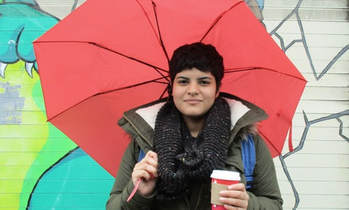
Kelly Fernandez
"I wish there was someone when I was younger to tell me that there isn’t one path to being a comic artist." kelly-fernandez.com @k3llyfernandez Bio: Kelly Fernandez is a cartoonist from Queens, New York. She was the recipient of the CAKE’s annual Cupcake Award in 2017 and a winner of Scholastic’s “Get Published by Graphix” competition. Her work has appeared in various comic anthologies such as Mine! and Dates: Volume 2 , as well as the teen literature and comics magazine CICADA. Her work often stars Latino women, and usually has something to do with folklore, monsters, or video games. When she’s not at her desk, you might find her looking for new places to eat or singing karaoke with friends. Where are you from? I was born in Queens, New York. My family is from the Dominican Republic. Where did you grow up? I grew up in Flushing, but I also spent a lot of time in Jackson Heights. How did your experiences affect your art? I think I was just exposed to a lot of things that come with being in a city as diverse as Queens. Flushing has a large Asian population, while the area of Jackson Heights that I grew up in has a large Latino population. As I’m getting older I’m realizing how being a part of both communities has affected me as a person and an artist. I went to school with kids who came from families who were Irish, Italian, Korean, Chinese, Mexican, Ecuadorian, and Colombian, and those are just the kids I can remember off the top of my head. We all brought different things to the table but we still all had things in common. I think it’s influenced what I like to draw, my artistic style, and the stories I tell. You received a publishing opportunity through Scholastic. How has that experience been? It’s been great, and also kind of surreal. I love working with my editor, and my new agent has been a tremendous help in giving me feedback on my story. I’m realizing it’s a lot different than working on a mini comic, since there’s so many steps and other people involved. But it’s been like a dream. You are currently a graduate student. What drove you to pursue a Masters degree? It was just a personal choice. I got my bachelors in graphic design, and I tried working in that field for a little bit after graduating. I didn’t like it at all, and freelancing has been difficult for me. Right now I’m studying to be a librarian so I can still be involved in the comics, since the public library was the place where I went for comics as a kid. What type of stories do you like to make comics about? I mostly like writing light-hearted stories, but I’d like to dip more into horror and suspense in the future. For me, making comics is like an escape from the real life, so I like to make cute, fun stories as a stress relief. I’m also trying to write stories that star latinas, regardless of the genre. What’s your process? Elaborate on how you work through your projects. How do you break up your time for your projects at different stages? I spend a lot of time writing and sketching in my notebook first. Usually my projects start with a drawing of a character and if I like them enough I ask myself: “what is this person’s story?” Then I write out the story with words (and drawings on the margins), and I might write a script if it’s a longer comic. If the comic is short (2-12 pages), I’ll go straight to thumbnails. After that I pencil and ink after thumbnails, and finally add color or graytones at the end. I try to give myself more time than I need whenever I start a project, just in case! What do you recommend to aspiring artists that you wish you had known much earlier? I would recommend artists to just take care of themselves, mentally and physically. I wish there was someone when I was younger to tell me that there isn’t 1 path to being a comic artist: For a long time I had a chip on my shoulder because I didn’t go to an art college and I felt like I would never be good enough. There are times where I go into slumps because there are artists who are better than me, doing better than me, or had better opportunities than me. I think every artist has their hang ups, but you can’t let those things keep you from doing what you want to do! What do you love best about making comics? I really like writing and drawing quick thumbnails, it’s my favorite part of making comics. It’s the most creative part, I think, and nothing is set in stone yet. Everything is still fast and loose in that stage. What do you wish was different about the comics industry? I’ve always wished that the comics industry was more diverse, but I think we’re slowly but surely getting there. Which books do you recommend artists should have in their reference library? Favorite instructional material? I would recommend “Drawing Words and Writing Pictures” and “Mastering Comics” by Jessica Abel and Matt Madden. My professor used those books in college to teach us comics and they were incredibly helpful. I would also just recommend collecting books and mini comics from your favorite artists and peers. I think you learn the most from example, and seeing what other people are doing can be inspiring.
Top 5 Favorite Artists?
Osamu Tezuka, Tove Jansson, Junji Ito, Yoshihiro Tatsumi, and Kyohiko Azuma
Top Favorite Comic characters?
I love all the Moomin characters, and my favorite Tezuka characters are Black Jack and Astro Boy.
Top 5 Favorite comics, graphic novels?
Here are some series that I’ve read over and over again: Black Jack by Osamu Tezuka, Uzumaki by Junji Ito, School Zone by Kanako Inuki, The Drifting Classroom by Kazuo Umezu, and Yotsuba&! By Kyohiko Azuma.
What type of work are you interested in doing? Now? In the future?
I’d like to keep making comics, but I’d also like to try writing chapter books and picture books. I’ve always wanted to work on a video game or try storyboarding, too. How can others find/ purchase your work? You can find my work on my website! it’shttp://kelly-fernandez.com/  Brittani Alexia @kuroitani "I enjoy telling captivating stories through my art!" Bio: Brittani Alexia is self-taught traditional and digital artist with a focus in Japanese manga. She is currently a graduate student at Savannah College of Art and Design (SCAD Atlanta) finishing up her MFA in Sequential Art. Where are you from? I ‘m originally from Florida, but later moved to Georgia when I was four. Where did you grow up? I grew up in Lawrenceville which is about half an hour north of Atlanta. It’s a decently populated suburban area, so I was around a diverse group of people growing up. How did your experiences affect your art? As a young kid, I really got into Japanese anime and manga and started drawing manga a lot. As I got older in high school is when I wanted to create my own stories. I was always drawing in between classes even into college. My biggest influence ironically came from Tetsuya Nomura after seeing his game, Kingdom Hearts. From there I wanted to do what he did and that’s where the idea of making manga became a passion. You recently received a publishing opportunity. How has been that experience? I’m in the finalization process with the publisher. However, that is all I’m allowed to say for now. As far as experience, the idea of being picked up is still sinking in for me. I’m slowly realizing that I’m now entering the professional world which I’m really excited about. You are currently a graduate student. What drove you to pursue a Master’s degree? Even though manga was my passion, I went into computer science for my undergraduate. For a while, I thought I could do programming since I was decent with it. However, after working for two years in the field, I soon found out I hated it. So, I figured I had nothing to lose, and applied to SCAD’s master’s program. During that time, I learned if I was going to have to work, I might as well do something I love. How has the SCAD MFA experience been for you? It has been amazing! I came into the program wanting and willing to learn as much as possible to get to professional quality with my work. It paid off. I’ve met so many great people and had so many opportunities to grow and learn more about the comic industry. I don’t regret a single day. What type of stories do you like to make comics about? I tend to skew more psychological and create stories that deal with tough issues such as inner growth, self-love and self-worth as well as depression and anxiety. I always enjoyed these kinds of stories more that were character driven. Especially after going through some rough parts of my life in college, I really felt the need to create stories based on what I learned dealing with such issues. What’s your process? Elaborate on how you work through your projects. How do you break up your time for your projects at different stages? I first start off with an idea that I would want to read, then turn that into story beats and write out a comic script. While developing the story I start off with the characters and their looks and personality. Then go into their story. Once that’s completed, I start thumbnailing out pages traditionally, then take them into the Clip Studio. I try to spend no more than a week on thumbnails. Once in Clip, I immediately start inking digitally. I tend to get one page inked completed in about two hours, and schedule myself based on the deadline. What do you recommend to aspiring artists that you wish you had known much earlier? What would you tell yourself 20 years ago? Study the foundations of art first. Doing things like figure study and environments goes a long way if you have that strong foundation. I know some may feel that want to stylize their work, but I’m telling you that will come naturally. Also, it’s okay to reference other artists outside your preference. Although my look is manga, I’ve learned to pull techniques and ideas from artists from a wide range of styles and mediums. I tend to take other approaches and try to adapt them into my style. What do you love best about making comics? Seeing my characters and their story come to life makes all worth it. Like even if I’m struggling to get a page out or get frustrated during the process, I get this feeling of excitement when I see it come together on final pages. What do you wish was different about the comics industry? I wish there were more known female POC creators out there. I feel sometimes I’m one of very few people who look like me doing manga-styled comics, even with other comics in general. I feel that there is a still a glass ceiling many artists are still trying to break through. Though I have noticed this is changing. Which books do you recommend artists should have in their reference library? Favorite instructional material? Have artist books from your favorite artist. I like seeing process work, and how they get to the final product. I collect artbooks from various artists and try to reference them whenever I want to get inspired or figure out a new process. I also buy figure study books. Top 5 Favorite Artists? Tetsuya Nomura Akira Amano Jorge Jiménez Kohei Horikoshi Chiho Saito Top Favorite Comic characters? Utena from Revolutionary Girl Utena Cairngorm from Houseki No Kuni Izuku Midoriya from My Hero Academia Kaneki Ken from Tokyo Ghoul Top 5 Favorite comics, graphic novels? With Great Abandon My Hero Academia Houseki No Kuni A Silent Voice Tokyo Ghoul What type of work are you interested in doing? Now? In the future?
For now, my main focus is my current comic. However, in the future, I wouldn’t mind collaborating with others creators on different projects/anthologies. How can others find/ purchase your work? Find my work on Instagram, Twitter, Tumblr, and Facebook as @kuroitani. 
Jorge Santiago Jr. “I am big on making stories, and I’m that person at the cafe rocking out and drawing people when I think no one is paying attention to me. But they probably are because of my hair.” @jorgesantiagojr. jorgesantiagojr.com Bio: Jorge Santiago Jr. is a professional comic artist aiming to become your new favorite storyteller. He created and drew Curse of the Eel, Requiem Sonata, Rare Drops, and is the co-creator and artist on Spencer and Locke with David Pepose as the writer. After earning his BFA in Graphic Design, he relocated to Atlanta. He obtained an MFA in Sequential Art from SCAD and became a freelance artist. Today, he prolifically produces memorable stories and teaches others how make comics. Where are your from? Where did you grow up? I was born and raised in El Paso, Texas. I lived there until maybe I was 25 or 26. We moved around a little, but the house we moved into when I was in second grade is still my parents home. How did your experiences affect your art? My parents were always big on empathy; putting yourself in other peoples shoes which is important for any storyteller. I think when you can put yourself into someone else's place and see life from their eyes, you can write anything. My parents raised me to be humble and put others before myself, which I think is why I can write comics that make people feel something. I drew a lot in my youth, but I think that is the most important aspect of my childhood that has affected my work today. Why did you pursue an MFA? I didn’t know at 17 that the first comic I fell into would change my life, so I went for a BFA in graphic design and did comics as a hobby. It wasn’t until I was about to graduate that I realized that comics were going to be my everything. When I wasn’t making the work I wanted or going to the places I wanted to go I decided that I wasn’t good enough to be published or garner anything but a passing glance from most people. I moved away from my home and family to Georgia to get my MFA in comics, now that I knew exactly what I wanted to do. What type of stories do you like to make comics about? I like to write comics that will move my readers. I don’t think action or drama by itself makes for interesting or provocative reads. There are many writers and artists who write for shock value but those works aren’t moving. Shock and emotion are very different, so what I try to write is a story that people can relate to, or characters they care about, or situations that move their hearts. I think the difference between a story that sticks with you and a story that doesn’t is empathy. What's your process? My process begins with emotions. I decide to write a story based on emotion I’m feeling or one that gets me thinking about “who would go through this that people could relate to?” My best comics are the ones where I begin with a seed of an emotion and then expand it to be a forest. Curse of the Eel began with wanting to write a comic about bullying, which is terrible. So I wanted to make a story where bullying is seen from multiple angles, from multiple people, and how, in a horror setting, those feelings and emotions could swell to something dangerous. With a cute weird Eel monster. You’ve always been willing to share your knowledge and have taught several workshops. What's your approach to teaching comics? I enjoy teaching, it just proves that I know enough about what I’m talking about to convey it to someone else. I’ve been able to break down my thought process into a method that makes it fun for me to teach other people how to make comics. My approach is give them guides, not rules. Comics and art are not win or lose endeavors, they’re methods of story expression, so when i teach, I show how they can express themselves the way they want to. I leave their art to them, I just try to guide them once I see the direction they plan to take. What do you recommend to aspiring artists that you wish you knew much earlier? Life drawing is kind of important. I didn’t get it in undergrad, but knowing how to draw the body does help when it comes time to drawing a cartoony version. At the very least, learn how to convey volume more than shape. Even the most cartoony art styles should have a sense of volume to the drawing. It’s the difference between drawing a ball and a circle. What do you love best about making comics? Making comics is the ultimate thrill where i can express my feelings and captivate my readers. It’s a visual symphony that I can perform all by myself, and I love that freedom. What do you wish was different about the comics industry? I wish comic companies and publishers would pay their creators better. There are so many geniuses who leave comics every year or never even try because the publishers aren’t willing to pay fairly. Money ruins everything, and in the comics industry it definitely puts a damper on a lot of potential awesome work. Which books do you recommend artists should have in their reference library? Hmmm, I don’t know, I have different references for different projects. I think everyone should read though. Not just comics, but books, movies, animation, songs, etc. Everything is potential fodder for new stories, so consume everything you can. Top 5 favorite artists? My personal favorite storytellers are Natsume Ono, Yusuke Murata, Stuart Immonen, Greg Tocchini, and Yutaka Nakamura. Netsuke Ono is the artist who has most informed my storytelling voice and paneling style, while the others have influenced my drawing style
Top 5 Favorite comic characters?
Hmmm…I don’t know, I don’t really think about characters separate from their stories. I’m also not super big on superheroes so my answers would be more shows or characters from things less mainstream. Jean Valjean from Les Miserables, Mob from Mob Psycho, Rio from The Gods Lie, Nausicaa from Nausicaa and the Valley of the Wind, and Saya from Deadly Class.
Top Favorite comics & graphic novels?
Low by Rick Remender and Greg Tocchini, The Gods Lie by Kaori Ozaki, Not Simple by Natsume Ono,Donten Prism Solar Car by Yasuo Otagaki and Yusuke Murata, and Princess Jellyfish by Akiko Higashimura
What type of work are you interested in doing?
I want to make comics that will make people cry, or feel excited, or moved somehow. I want to create stories that will stick with people and create a lasting impression like my favorite works did for me. How can others find your work? My blog is at jorgesantiagojr.com @jorgesantiagojr on all social media: Instagram, Tumblr, and Twitter You can purchase my comics from: http://jorgesantiagojr.bigcartel.com/ Thank you. |
Archives
November 2023
Categories
All
|



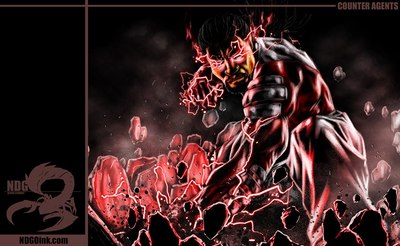

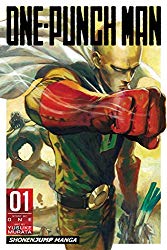




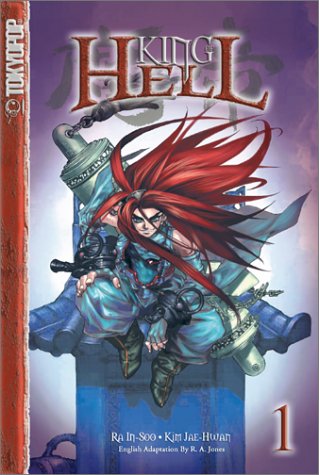

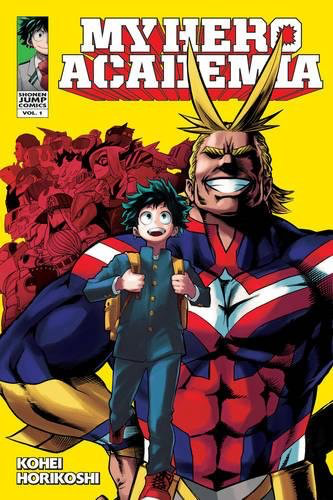
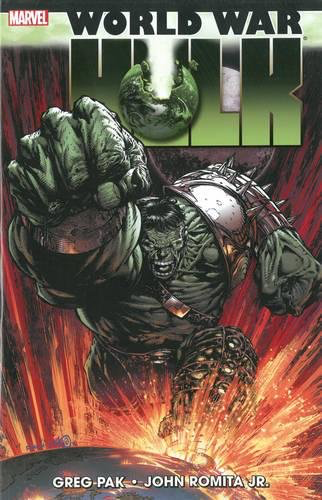




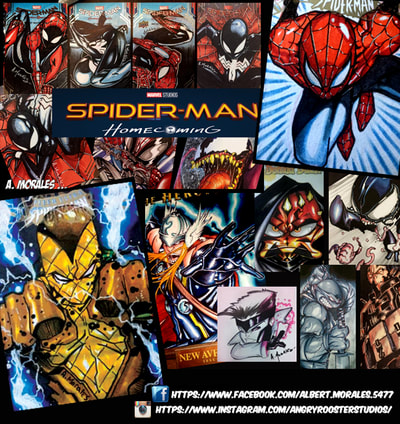






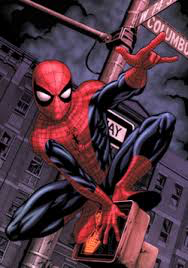
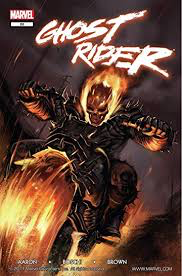








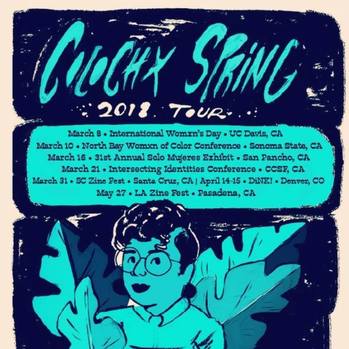


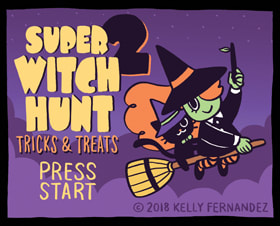

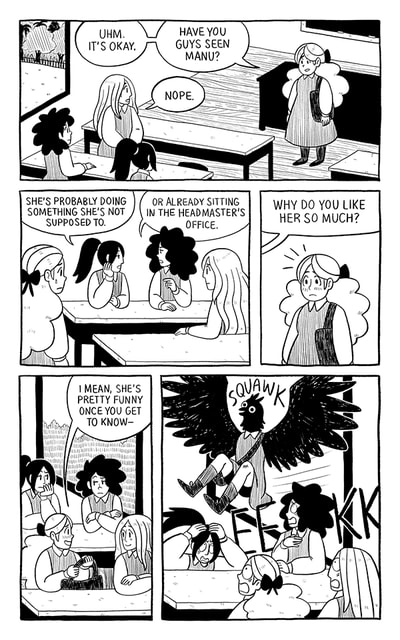
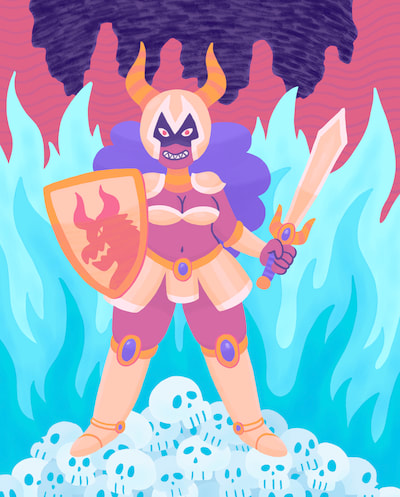











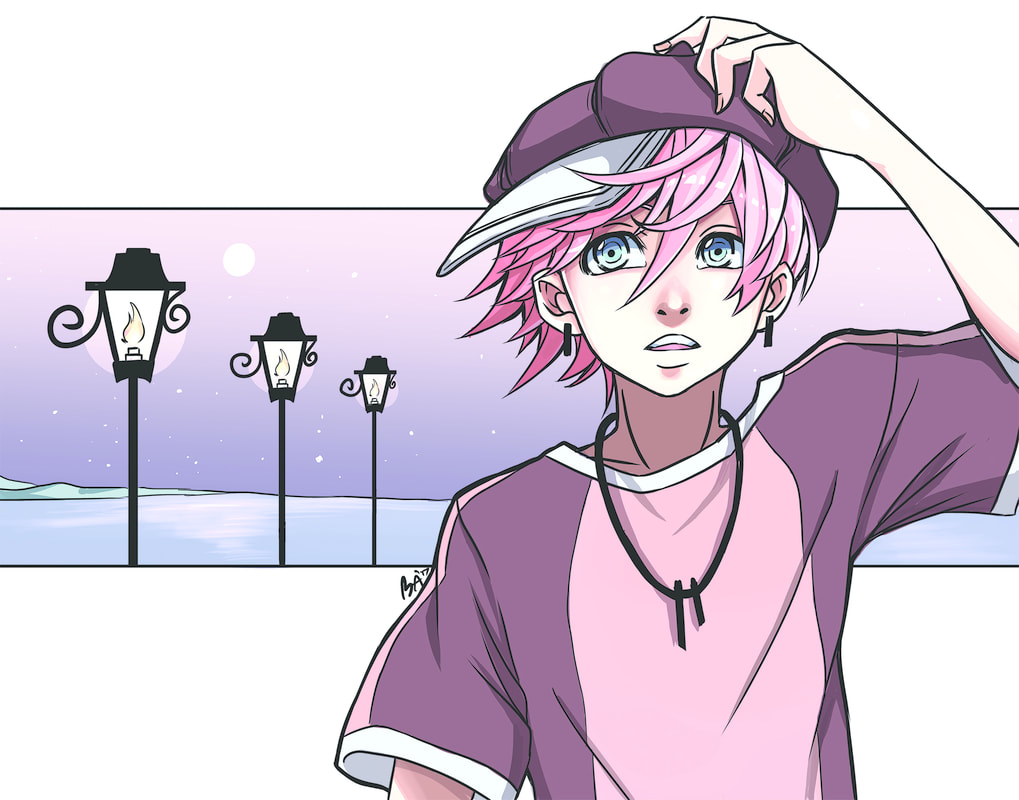


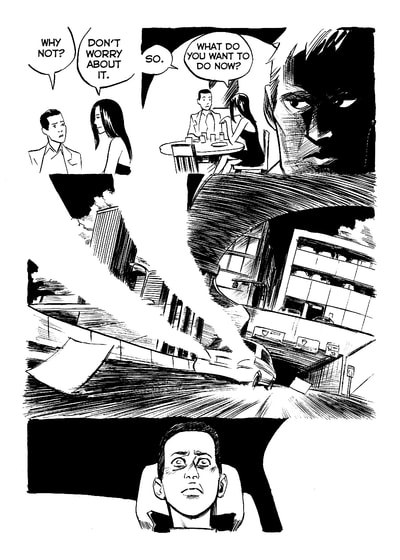













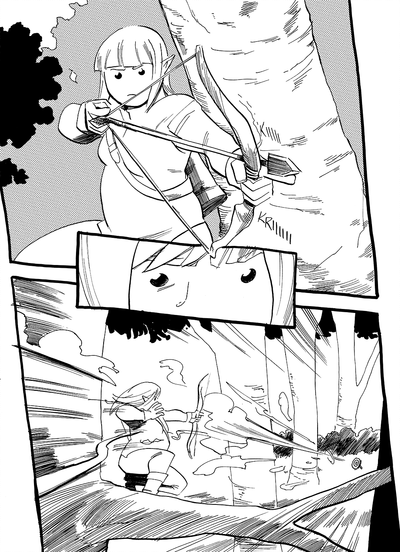
 RSS Feed
RSS Feed
